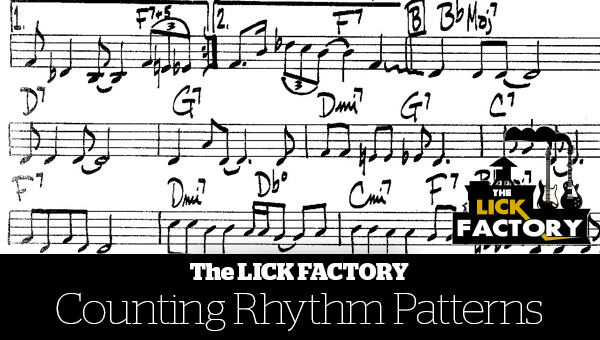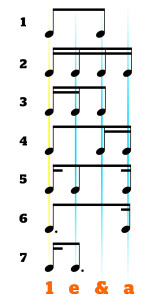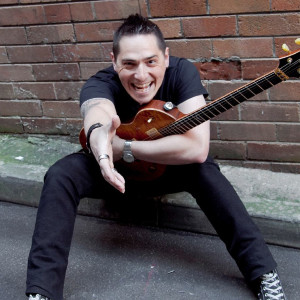Counting Rhythm Patterns – 8th and 16th note combinations
Counting rhythm patterns is an invaluable tool to any musician. Being able to count will help you advance a lot faster as a player. To help you on your way we give to you 8th note and 16th note combinations.
Let’s be honest. When you’re up on stage playing to the masses does counting rhythm patterns really run through your mind. Well if you’re playing in a band that does technical prog-rock stuff like Dreamtheater, you probably would but for the rest of us the answer would be no.
So you’d have to ask yourself the question what is the point?
Being able to count rhythm patterns helps you in three key areas regardless of the level of playing ability you are at.
The first key area is LEARNING. Being able to count will drastically reduce the amount of time it takes to learn something. Be it a ripping guitar riff or perhaps a strumming pattern, you will ensure that you properly execute the rhythm of the phrase each time. This is imperative when committing something to memory because the only way for you to really nail something is repetition and more importantly correct repetition.
The second key area where counting rhythm patterns helps you, is when READING & WRITING music. Whether this is reading standard notation, a lead sheet or a chart, being able to read and decipher rhythm patterns and symbols is a necessity. You will find that as your skills counting rhythm patterns develop, you will be able to make rhythmic markings on your own cheat sheets for gigs. This will enable you to accurately play a new song in front of an audience even though you may not have completely committed it to memory.
The final area in which counting rhythm patterns helps you is in your INDIVIDUAL PRACTICE. Practicing scales or chords are only effective when you marry them up with a metronome. The second you do this whether you know it or not, you are dealing with rhythm and counting. Varying up your rhythm patterns while practicing will enable you to not only learn the scales and chord patterns, it will change the way in which you think about music and how you can rhythmically displace notes. By being aware of this fact and purposely applying varying patterns you will ensure that you not only develop your rhythm and counting technique, but you will allow counting rhythm patterns to become a natural part of your playing style.
Counting rhythm patterns is covered extensively in the LICK FACTORY courses and your skills in this area are developed from strength to strength. Whilst the basics of counting rhythm patterns are all covered in the PRELIMINARY LESSONS, the area in which I’d like to touch on here is the ways in which you can count even subdivisions of a beat.
While this can sound a little technical, its actually not. We are talking about the use of 8th notes (quavers) and 16th notes (Semiquavers) and all the ways in which they can be combined to take up a single beat.
We’ll begin by looking at the 8th note.
Counting Rhythm Patterns: 8th notes / Quavers
Otherwise known as the Quaver, the 8th note represents a note that should be struck and sustained for ½ of a beat. Diagram 1 shows the 8th note as a singular event then a double and finally a quadruple.
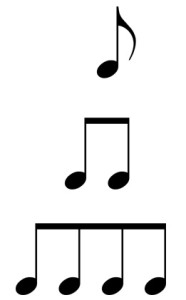
Diagram 2 is the symbol used for the equivalent rest. Music is a combination of notes that you play alongside periods of silence. The rest is just as important as the note itself and you should ensure that your instrument is completely muted when a rest symbol appears.
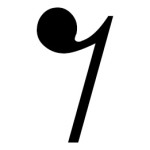
Counting 8th notes (and its rests) is a relatively easy process. The first step would be to put on a metronome to regulate a beat. If you count the clicks on the metronome 1 through to 4 before repeating, you would simply say the word ‘and’ in between each of the numbers.
Saying the word ‘and’ will give you a relative position of where you should strike the 8th note between beats.

Counting Rhythm Patterns: 16th notes / Semi-quavers
The next symbol that we’ll cover in this part of counting rhythm patterns is the 16th note. This is otherwise known as the semi-quaver with its symbol representing a ¼ of a beat. Its singular event is much like the 8th note except that it has a double tail protruding from the top of its stem. In a double instance, the 16th note has a double bar between the stems of both notes, while the four-note version has the double bar extending across all four stems.
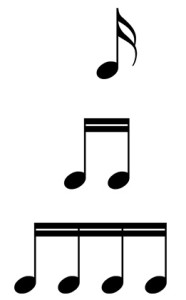
Counting 16th note’s expands on the technique we used for counting 8th’s. To subdivide the “1 and” we simply say ‘e’ (pronounced ee) and ‘a’ (pronounced uh) preceding and following the ‘and’.

Keeping the consistency with the 8th note rest, the 16th note rest looks the same but with a second line protruding at the top. The rest would be counted in the same way as the individual notes using the ‘e’ and the ‘a’.
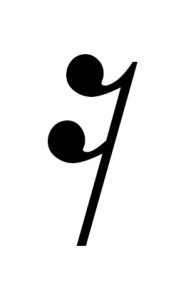
The final element before combining these values together to make up a single beat, is the addition of a dot after the symbol. The dotted note (or rest) indicates that the value has changed to half of itself again. For example a dotted 8th note, usually worth ½ a beat, would be become ¾ of a beat. For the following combinations, we will only be addressing the dotted 8th note.
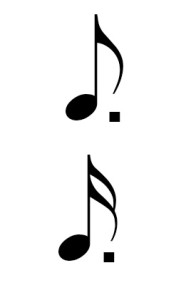
With the how out of the way, we can now look at the different ways 8th notes and 16th notes can be combined together to make up one beat. The diagram below illustrates all the combinations, their symbols and how they should be counted.
This article is based on concepts from the LICK FACTORY’s Preliminary Lessons. Everything you need to know to get started on your musical journey.
Need a quicker fix? the ULTIMATE CHORD GUIDE: Volume 1 might be the answer.

